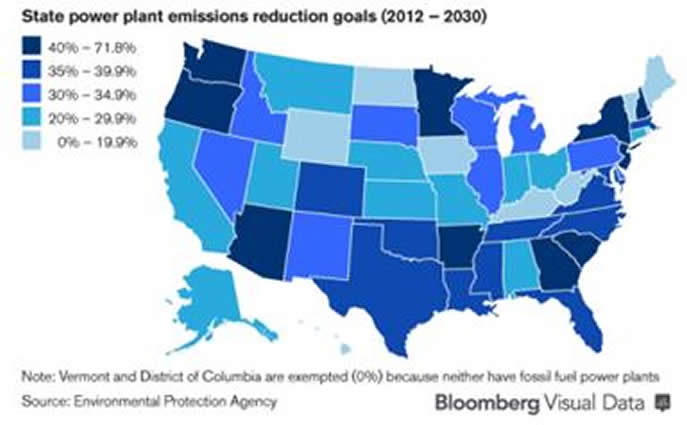(Part 1 of EPA Carbon Dioxide Rules discussion)
In recent posts, we discussed the increasing role of natural gas in our electricity generation resource mix. We discussed that we think it is likely that natural gas will continue to increase from a 10 percent share in 2005 to at least a 40 percent share in 2030. As a result, a second interstate natural gas pipeline is planned from Pennsylvania to North Carolina. If natural gas prices were to stabilize at the lower end of its expected price range, we think that the 40 pecent share could possibly be much higher. This transition to natural gas in North Carolina is largely independent of new EPA rules on carbon dioxide.
Last year, the EPA issued final rules for all new power plants that limited the carbon dioxide emitted to about 1 pound per kWh, about what is produced by a natural gas-fired power plant. Since even the most efficient coal-fired power plants emit about 2 pounds of carbon dioxide per kWh, the new rules essentially prohibited new coal-fired power plants.
The EPA then announced they planned to propose rules for all existing power plants. We were expecting the rules to be an extension of the earlier standard that would be applied to all power plants at some future date, possibly 2030. While that approach would certainly have created economic hardships for utilities with newer coal-fired power plants, many of the nation’s older coal-fired power plants would be approaching the end of their useful life by 2030.
On June 2, 2014 the EPA released the long-awaited proposed rules. The new rules move away from a power plant-specific standard of carbon dioxide per kWh and instead establish a national target of a 30 percent reduction in carbon dioxide emissions by 2030.
What is unique here is that the EPA goes on to make a calculation to determine a percentage reduction required by each state. Apparently, there are many factors in the formula and required reductions range from 70 percent for Washington to 10 percent for North Dakota. For North Carolina, the required reduction is nearly 40 percent.

While the EPA formula is supposed to reflect a state’s ability to reduce carbon dioxide emissions, some say it leaves too much to EPA’s discretion and interpretation and the results are arbitrary and unfair to some states.
As you might expect, with billions of dollars in compliance costs at stake, electric utilities are intensely interested in every nuance of the EPA formula. As we learn more about the details and implications for North Carolina, we will keep you posted.
Do you have a question or comment about the new EPA rules for carbon dioxide? Suggestions for future topics? Please submit them to MAC@wemc.com.
